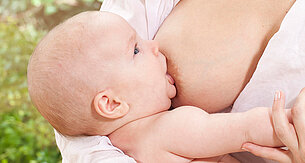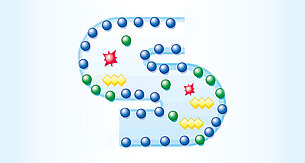How to develop a child’s preference for healthy foods for life

Your child’s preference for healthy foods is in your hands
When your child’s cuteness overload can be a cause for concern.
Little children’s full cheeks, chubby arms and legs may look cute and show that they are well-fed and well taken care of, but that adorable baby fat may be a health risk and a cause for concern.
Childhood obesity, a global pandemic.
Childhood obesity has reached epidemic levels globally and today nearly one in four children and teens are overweight or obese.1, 2
Obese children likely to stay obese into adulthood.
55% of obese children will be obese teens and 80% of obese teens will remain obese into adulthood.3
Consequence of childhood obesity.
Apart from affecting social skills, emotional well-being and self-esteem, being overweight or obese in childhood is also associated with poor academic performance and a lower quality of life experienced by the child. Being overweight is also associated with a weak immune response and an increased risk of childhood infection and diseases.4 In later life, obese children are more likely to develop chronic diseases such as diabetes, as well as cardiovascular, orthopaedic, neurological, hepatic, pulmonary and renal disorders.5
What causes obesity.
Obesity is a complex disorder with multiple causes that include genetics, a lack of physical activity, and a poor diet. Supporting evidence shows that excessive consumption of added sugars has played a major role in the rising rates of obesity.6
The bulk of added sugars in children’s diet comes from beverages such as sugar-sweetened sodas and milk.7
An intake of added sugars in early life creates a preference for sweet foods throughout life.
Food preferences in children first start in the womb with the diet of their mother, and after birth with their early childhood diet.8 Early exposure to sweetened food, or food with added sugars during processing or preparation, can lead to an increased preference for sweet foods throughout life.9-11
What parents can do to develop their children’s preference for healthy foods.
It is important to have a balanced diet during pregnancy as a child’s sense of taste and smell develops before birth.12 Research has shown that pregnant mothers’ food choices mould their unborn child’s food preferences. This is referred to as “programming”.13
While a child is able to perceive flavours while still in the womb, their sense of taste continues to evolve throughout childhood. A varied diet low in processed foods and added sugars is important in shaping a child’s healthy food preferences and will have a lasting impact on their life.
At HiPP, children are the focus of our attention by carefully selecting ingredients that are closest to nature. HiPP Organic Combiotic® contains only natural lactose and no added sugars. Give your child HiPP Organic Combiotic®. Help support your child’s health and development with organic and naturally sourced ingredients.
Reference:
1 Popkin BM, Doak CM. The obesity epidemic is a worldwide phenomenon. Nutr Rev. 1998;56(4 Pt 1):106-114.
2 NCD Risk Factor Collaboration (NCD-RisC). Worldwide trends in body-mass index, underweight, overweight, and obesity from 1975 to 2016: a pooled analysis of 2416 population-based measurement studies in 128·9 million children, adolescents, and adults. Lancet. 2017;390(10113):2627-2642.
3 Simmonds M, Llewellyn A, Owen CG, Woolacott N. Predicting adult obesity from childhood obesity: a systematic review and meta-analysis. Obes Rev. 2016;17(2):95-107.
4 Frydrych LM, Bian G, O'Lone DE, Ward PA, Delano MJ. Obesity and type 2 diabetes mellitus drive immune dysfunction, infection development, and sepsis mortality. J Leukoc Biol. 2018;104(3):525-534.
5 Sahoo K, Sahoo B, Choudhury AK, Sofi NY, Kumar R, Bhadoria AS. Childhood obesity: causes and consequences. J Family Med Prim Care. 2015;4(2):187-192.
6 Drewnowski A. The real contribution of added sugars and fats to obesity. Epidemiol Rev. 2007;29:160-171.
7 Bellisle F, Drewnowski A. Intense sweeteners, energy intake and the control of body weight. Eur J Clin Nutr. 2007;61(6):691-700.
8 Mennella JA, Beauchamp GK. Early flavor experiences: research update. Nutr Rev. 1998;56(7):205-211.
9 Beauchamp GK, Moran M. Dietary experience and sweet taste preference in human infants. Appetite. 1982;3(2):139-152.
10 Beauchamp GK, Moran M. Acceptance of sweet and salty tastes in 2-year-old children. Appetite. 1984;5(4):291-305.
11 Liem DG, de Graaf C. Sweet and sour preferences in young children and adults: role of repeated exposure. Physiol Behav. 2004;83(3):421-429.
12 Robinson S, Fall C. Infant nutrition and later health: a review of current evidence. Nutrients. 2012;4(8):859-874.
13 Muniandy ND, Allotey PA, Soyiri IN, Reidpath DD. Complementary feeding and the early origins of obesity risk: a study protocol. BMJ Open. 2016;6(11):e011635. Published 2016 Nov 15.




